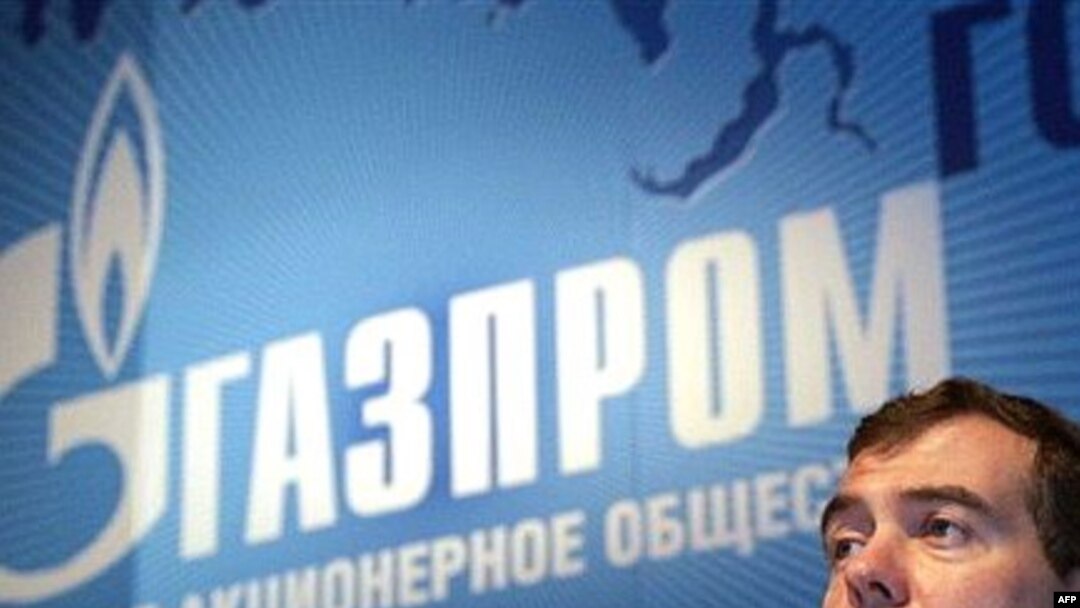Medvedev told the Russian newspaper “Vedomosti” in an interview published July 5 that joint ventures and asset swaps with foreign partners will also help Gazprom meet future demand. He named Germany's E.ON and Britain's BP as possible partners in future swap deals.
The Gazprom board chairman rejected criticism the company has squandered funds on secondary projects while neglecting investment in production, saying fears of a gas deficit on the domestic market are "groundless." The only gas shortage on the horizon, he added, are "for those who want to buy it on the cheap."
Gazprom reported in late June that its profits more than doubled in 2006, to $24.6 billion. The climb is attributed to higher gas prices at home and for its CIS customers.
Gazprom's Critics
Western critics have long claimed that Gazprom's investment policies are unrealistic, and that the gas monopoly has overextended itself by delving into what many believe to be "political" pipeline projects meant to promote Russian foreign policy goals and murky money-diversion schemes.
One particularly vocal critic of Gazprom's corporate governance is Hermitage Capital Management, which with $4 billion invested is Russia's largest foreign institutional investor. In November 2006, Russian authorities banned Hermitage CEO William Browder, a U.S. citizen, from entering Russia, and accused him of constituting a "danger" to Russian national security.
Numerous analysts have pointed to Gazprom's reliance on cheap gas imports from Central Asia to meet its rising domestic demand. Some suggest this practice will end soon, as Central Asian leaders increasingly turn toward lucrative markets in China and India, and raise gas prices to world levels accordingly.
Gazprom's agreement with Italy's Eni to build a second major gas pipeline under the Black Sea, known as South Stream, is expected to cost $13.5 billion and will be owned and financed by a 50-50 joint venture between the two companies.
There has been much Russian and Italian hype over South Stream. But many energy analysts have questioned the commercial value of the project.
Gazprom is also committed to building the Nord Stream pipeline under the Baltic Sea. The estimated cost of Nord Stream is reportedly $6 billion.
In the meantime, existing Gazprom pipelines to Europe are not operating at full capacity -- the Blue Stream to Turkey is transporting only a fraction of the gas it was expected to, the Ukrainian main pipeline is underused, and the Ukrainian energy Ministry has begged Russia to send more gas through its system to Europe.
Kyiv's offer, however, was rejected by Valery Golubev, Gazprom's deputy CEO, who improbably stated, "there is no demand in Europe for more Russian gas."
Plans, meanwhile, for a pipeline from Novopskov on the Russian-Ukrainian border to Uzhhorod on the Hungarian-Ukrainian border, designed to transport an additional 16 billion cubic meters of Russian gas to Europe remains dormant. At a cost of $2.5 billion, it would have been a much cheaper route than South Stream, but because it would go through Ukraine, the Kremlin vetoed the route.
Meeting Demand
Russia's growing demand for gas has also called into question where gas from the giant Kovykta gas field will be sold now that the British-Russian venture BP-TNK was forced to sell its license to Gazprom.
Earlier, an internal Gazprom study indicated that Kovykta gas would be used solely to meet domestic demand. BP-TNK wanted to sell this gas to China, but Gazprom would not allow them to use its pipelines for this purpose.
If Kovykta gas is sold on the Russian domestic market below world market prices, it will lower Gazprom's income projections.
Russia's marked increase in domestic gas consumption -- which jumped by 17 billion cubic meters between January 2004 and December 2005 -- is a major factor haunting the Kremlin.
Gazprom's Research Institute for the Economics of the Gas Industry, NIIGazekonomika, determined in a report in late 2005 that domestic consumption of natural gas is increasing at a faster pace than projected in Russia's Energy Strategy, the official guidelines for the energy sector adopted in May 2003.
The new study noted that the projections of the Russian Energy Strategy are based on data from the 1980s, which the study's authors claim are not reliable.
"Taking into account the objective results, in the future one cannot discount the growing internal demand for gas," the NIIGazekonomika study states. "The fulfillment of any of the scenarios presented can potentially lead to an inability by Russian Federation producers to meet demand for gas in both domestic and foreign markets. This situation in turn can prevent double-digit Russian GDP growth and can disrupt gas export obligations."
Medvedev's hopes that Russian-Western joint ventures will help solve Gazprom's production problems is a risky gamble. Many Western companies are wary of doing business with Gazprom after seeing Russian heavy-handedness in Sakhalin-2, Kovykta, and the giant Shtockman gas field, where these companies were forbidden from participating as full partners.
Senior managers of Western energy firms might well ask what, if any, guarantees exist that Gazprom's behavior will change now that it needs Western capital and technical expertise to meet its obligations?
The Post-Soviet Petrostate
WEALTH AND POWER. At an RFE/RL briefing in Washington on January 24, Freedom House Director of Studies Christopher Walker and RFE/RL regional analyst Daniel Kimmage argued that energy-sector wealth is preventing many former Soviet countries -- Azerbaijan, Kazakhstan, Russia, and Turkmenistan -- from developing strong democratic institutions.
LISTEN
Listen to the entire briefing (about 90 minutes):
RELATED ARTICLES
Russia's Gazprom Looks Ahead To A New Year
Azerbaijan: Coping With The Oil Windfall
Azerbaijan Boom Sparks Fears Of Dutch Disease
Kazakh President Tells West -- We Don't Need Your Advice


